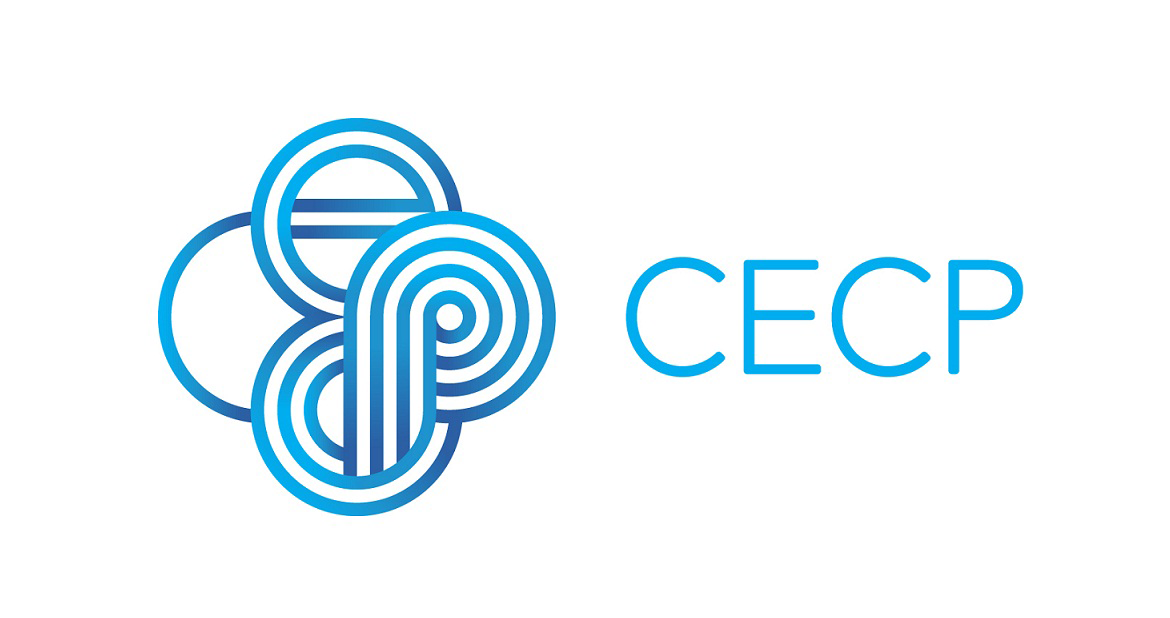2022 CECP Look Ahead: Focusing Corporate Purpose

By: CEO CECP Daryl Brewster
2021 was a tipping point for global challenges—from new COVID-19 variants to racial reckoning to climate change and more.
A recent study conducted by the Milken Institute and The Harris Poll finds over half (54%) of the surveyed global citizens said they trust companies more than government to find solutions on COVID-19, while 60% believe companies have been more reliable than the government in keeping their country running during COVID-19. Employees and customers are seeking to associate with companies that share their value systems, and the pandemic has only strengthened these affinities.
Hard questions are being asked of all of us, but especially of CEOs. The public is relying on them for their agility and perseverance. This is why, as CECP guides CEOs and companies on their purpose journeys, we are focused on a few core areas, our Centers of Excellence: community investment, employee engagement, environmental social governance (ESG)/sustainable business, diversity equity and inclusion (DE&I), and telling the story.
Here’s what is happening in those areas now and in the year ahead:
- Employee Engagement is Number One
- DE&I Moves from Commitment to Action
- Community Investment Balances Strategic Giving with Reactive & Local Response
- Sustainable Business is Now Business
- Narratives Matter: Tell Your Corporate Purpose Story
Employee Engagement is Number One
CEOs at CECP’s 17 CEO roundtables repeatedly said that they made it through the last year because they focused on their people. But due to the Great Resignation—including the 4.4 million workers who quit their jobs in September 2021—companies should also plan on pervasive high employee mobility. They need to reframe how they approach managing workers by rethinking financial, social, and professional development opportunities to create a new employee value proposition. A key part of business strategy is engaging with individual employees as stakeholder number one—now and in the future.
Leaders are also holding “stay” conversations to retain employees, acting on feedback, hiring differently, and educating employees with the most in-demand skills. An April 2021 CECP Pulse Survey on frontline workers found most respondents (52%) had developed a policy to upskill and/or reskill their frontline workers, while less than a quarter had not. For example, there are 430,000 open construction jobs in the U.S. alone, and 10 million unfilled manufacturing jobs globally, which is why Stanley Black & Decker announced a five-year commitment of up to $25 million to fund vocational skills training in construction and manufacturing.
A strategy proven to increase retention and engagement, the Giving in Numbers study found that average volunteer participation rate at companies decreased from 33% in 2018 to 20% in 2020 due to the pandemic. Alternative options such as virtual volunteering increased from only 38% offering it in 2018, to 87% in 2020, helping companies reinvigorate these programs.
The topic of conversation at CECP’s January CEO Roundtable will be CECP’s in-depth employee engagement research about frontline workers, with support from the Ford Foundation. Also watch for further CECP research in 2022 on the Future of Work.
DE&I Moves from Commitment to Action
This year, companies moved from making commitments in DE&I to acting on those intentions, such as adjusting policies and strategies. A CECP Pulse Survey in June 2020 gathered insights on anti-racism efforts by companies, finding 62% of those surveyed issued a C-Suite statement about anti-racism efforts. In June 2021, one year later, another CECP Pulse Survey found 12% were pivoting to review internal policies.
While a systemic focus on DE&I is becoming increasingly important to corporate America, it’s an expectation for most Gen Zers and Millennials who make up their current and future workforce, investors, buyers, and even suppliers.
Many want to know: what real actions are companies taking? Some are reporting regularly, while others are working to catch up with new and emerging expectations to track and disclose DE&I data for greater transparency and accountability.
CEO Action for Diversity & Inclusion outlines some of the ways companies are acting on DE&I commitments. We see bold actions, such as Citibank agreeing to a racial audit to investigate if, and how, it contributes to racial discrimination. The audit will focus on its 2020 commitment to dedicate $1 billion toward initiatives to close the persistent racial wealth gap in the U.S. Due to external pressure, primarily from shareholders, we expect to see more of this. There was also the recent mandate by NASDAQ for corporations to have board diversity, which Kelly Grier from EY will discuss at the March 2022 CEO Roundtable.
In the next year, CECP will present new research assessing best practices, measurement, and lessons learned in DE&I, resulting in tangible insight for leaders managing DE&I across companies. CECP’s Investing in Society 2022 edition will also include insight into top companies’ progress on social and workforce investments. The February 2022 CEO Roundtable will feature Tim Ryan from PWC, who will be addressing DE&I pushback.
Community Investment Balances Strategic Giving with Reactive & Local Response
Companies continue to balance strategic giving with reactive and local response as part of an investment strategy that serves all community stakeholders. The latest Giving in Numbers report found corporate social investments increased an unprecedented 41%, due to health care companies’ rapid pivoting to provide product donations to communities in need. Additionally, non-cash contributions experienced the highest increase in median dollar value among all funding types (93%) in the last five years from $4.8 million in 2016 to $9.2 million in 2020. And the median ratio of COVID-19 contributions as a percentage of total community investments was 16.6%.
A July 2021 CECP Pulse Survey asked companies if, as part of the grant application process or about the communities they are impacting. Over half (57%) ask for information about communities they are impacting. These organizations are responding to local needs by creating innovative public-private partnerships that support closing equity and access gaps. Examples include a Discovery Education partnership that features collaborations between some of the nation’s largest school districts and leading companies and foundations committed to community engagement, such as the Los Angeles Unified School District and the Annenberg Foundation.
CECP will be exploring how companies are innovating in response to the needs of community stakeholders through sessions at the CECP Summit in May 2022 and research into innovations in corporate foundations.
Sustainable Business is Now Business
Companies should expect investor demand of information on climate and human capital management. This includes forward-looking metrics and plans to mitigate ESG risks, seize ESG opportunities, and see where the E, S & G are merging.
E: Business leaders need to show how they will meet science-based targets for 2030 and beyond. For example, PwC has made a worldwide science-based commitment to reach net zero greenhouse gas emissions by 2030. Companies will also need to demonstrate how they will manage physical climate impacts from intensifying weather and potential geopolitical unrest. Corporate responsibility ties will also be made between DE&I and the disproportionate effects of climate change.
S: To continually listen to employees, companies can ask them how they are doing on sustainability, with tools such as a Gallup GS5 survey. In terms of human capital management, the International Labor Organization (ILO) estimates that 24 million jobs worldwide could be created by the green economy by 2030. Companies will need talent across business sectors with green skills to achieve their sustainability goals. To help meet this need, CECP is partnering with Tunley Engineering, a UK-based engineering performance management firm on a mission to decarbonize the future, to help companies set bold commitments around carbon emission reduction and/or neutrality.
G: Integrating ESG into board and management team decisions is crucial. A key area of public interest lies around what the C-Suite is getting paid, with a growing trend of companies connecting executive pay to achieving specific climate targets.
CECP will be working with companies to identify where they are on their ESG/Sustainable Business journey, where they aspire to be, and how we can help them move forward. We help companies through tools such as our Long-Term Plan template, the ESG Snapshot, and Forward-Looking Disclosure Analysis, and events such as the CEO Investor Forum.
Narratives Matter: Tell Your Corporate Purpose Story
Corporate Social Responsibility (CSR), sustainability, and/or impact reports are a vital way to tell a company’s purpose story, but there is little consistency across the way these reports are created and presented, and this raises many questions.
What do we call them? CECP’s Pulse Survey in November 2021 asked companies how they title their annual reports. While "Sustainability Report" and "Impact Report" were the two most common titles, there was much variation in responses. Additionally, from reviewing hundreds of reports, there are discrepancies in the content.
Are these reports getting into the hands of those looking for this information? Consumers are the stakeholders that investors ask most about, but these reports typically don’t talk about that audience. Meanwhile, employees point to CSR reports with pride and want to see themselves in them. The audiences these corporate purpose reports target continuously change and can be contradictory.
Can we trust the information? The latest Edelman Trust Barometer investor report, a survey of 700 institutional investors, found “86% of U.S. investors believe that companies frequently overstate or exaggerate their ESG progress when disclosing results, and 72% of investors globally don’t believe companies will achieve their ESG or DE&I commitments.” At the same time, a vast majority still want to see these commitments, including the 94% of the American investors surveyed, who expect companies to have net-zero plans.
What are the innovations in reporting? Many companies such as PepsiCo and Unilever now have reporting centers to customize the information shared, and some use AI tools such as XBRL, which tag reports and data automatically. Rating and rankings agencies are undergoing massive, positive consolidation, making it easier to report and consume information.
Over the coming year, CECP will be exploring effective ways for companies to tell their stories to key stakeholders. Watch out for bold recommendations on how to tackle the ever-important reporting conundrum.
What theme speaks to your company and where you want to grow in 2022? What will your corporate purpose journey hold?

